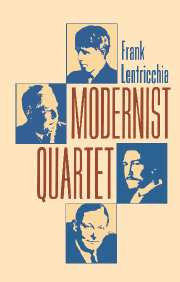1 - Philosophers of Modernism at Harvard, circa 1900
Published online by Cambridge University Press: 23 November 2009
Summary
When george santayana was appointed to the philosophy department at Harvard in 1889, just a year after finishing his doctorate there, he became the junior colleague of William James and Josiah Royce, and the three together, over the next two decades – in relationships supportive, competitive, and critical – collectively defined the shapes and limitations of what would come to be understood as modernism in the United States: its desires and values, its literary, social, and philosophical genesis and ground, and the sometimes stinging antithetical force of its cultural and social commentary. In different ways, Santayana, James, and Royce each addressed the future of philosophy and poetry as if, at the same time, they were addressing the future of society, as if the shape of things to come in some crucial part depended on the way writers and intellectuals conducted themselves. The landmarks of modernism established by the group are easy to identify: James's The Principles of Psychology in 1890, a work which among its other accomplishments gave us both the term and the theory of “stream of consciousness”; Santayana's The Sense of Beauty in 1896 and his pivotal Interpretations of Poetry and Religion in 1900; James's Pragmatism in 1907; and, finally, in 1913, one year after Harriet Monroe founded Poetry: A Magazine of Verse, modernism's inaugurating little magazine, Royce's The Problem of Christianity.
If the years between 1890 and 1913 mark the most energetic period of American philosophical modernism, that same period also represents, as more than one historian of American literature has deceptively implied by word and by silence, the big blank of American poetic history.
- Type
- Chapter
- Information
- Modernist Quartet , pp. 1 - 46Publisher: Cambridge University PressPrint publication year: 1994



